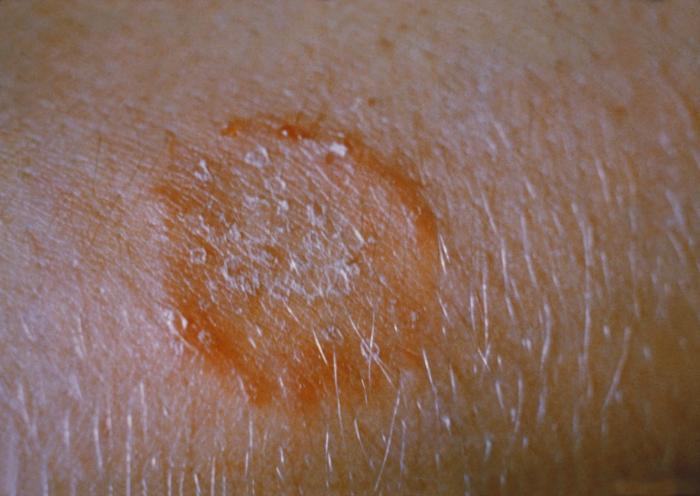Ringworm is a fungal infection of the skin in humans and domestic animals such as sheep and cattle. Fungi are organisms that survive by eating plant or animal material.
Those that cause parasitic infection (dermatophytes) feed on keratin, the material found in the outer layer of skin, hair, and nails.
These fungi thrive best on skin that is warm and moist.
This condition has been prevalent since before 1906, at which time ringworm was treated with compounds of mercury.
Hairy areas of skin were considered too difficult to treat, so the scalp was treated with x-rays and followed up with antiparasitic medication.
It is estimated that in current times, up to twenty percent of the population is infected by ringworm or one of the other dermatophytoses.
It is especially common among people who play sports, wrestling in particular; wrestlers with ringworm may be disqualified.
Misdiagnosis and treatment of ringworm with a topical steroid can result in tinea incognito, a condition where ringworm fungus will grow without typical features like a distinctive raised border.
Those that cause parasitic infection (dermatophytes) feed on keratin, the material found in the outer layer of skin, hair, and nails.
These fungi thrive best on skin that is warm and moist.
This condition has been prevalent since before 1906, at which time ringworm was treated with compounds of mercury.
Hairy areas of skin were considered too difficult to treat, so the scalp was treated with x-rays and followed up with antiparasitic medication.
It is estimated that in current times, up to twenty percent of the population is infected by ringworm or one of the other dermatophytoses.
It is especially common among people who play sports, wrestling in particular; wrestlers with ringworm may be disqualified.
Misdiagnosis and treatment of ringworm with a topical steroid can result in tinea incognito, a condition where ringworm fungus will grow without typical features like a distinctive raised border.














































